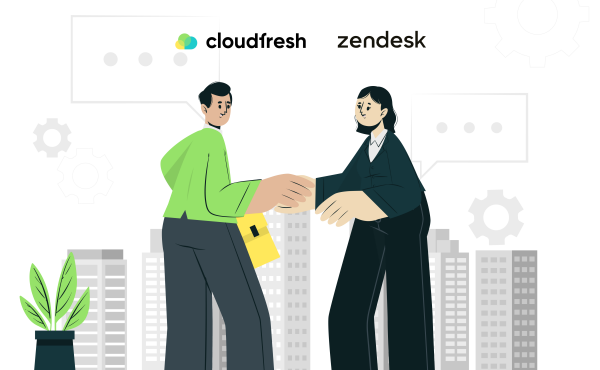Who is customer success manager
How to Build a Customer-Oriented Company

Customer-oriented work is a critical component of organizations engaged in various branches of production and services. It is necessary to improve the rating and increase profits of such a business participant.
It would be best to have a specific strategy to meet customer needs, which requires in-depth knowledge of service principles. It is necessary to follow precise rules and persistently pursue the goal for your company to gain customer orientation.
This article will discuss the main approaches to attracting customers and building a competitive, flawless service that meets their needs. In addition, we will look at specific examples of customer-oriented approaches successfully implemented by well-known major corporations succeeding in the market.
The concept of customer service orientation
An emphasis on the customer, as well as employee, experience can lead to increased customer lifetime value (CLV), according to a report by Software Advice, a Gartner company. It revealed that firms focusing on these areas achieve, on average, a net promoter score — a customer loyalty and satisfaction metric — that is 14 points higher than their competitors that do not focus on the customer and employee experience.
Considering the customer’s interests implies a priority solution to his problems. At the same time, the company puts other issues on the back burner. Supporting the customer’s needs should be the main task of an organization engaged in selling goods or services. However, the solution to such a task should be economical enough to optimize existing costs.
Some business participants see maximizing revenue as the only valid goal, forgetting to consider the needs of their customers. Focusing on profitability and increasing the number of branches, many people leave it to the end customer to determine their needs and make losses. Another common mistake of managers is overemphasizing the product being produced or sold. If the company does not pay proper attention to its customers, all their efforts, as a rule, come to naught.
It is necessary to clearly understand that any entrepreneurial activity is only possible in the consumer market. Therefore, the leading companies have met their customers by providing them with significant support. A strategy based only on effective sales (see cross sell vs. upsell) and modernization of the product offered is often unprofitable.
Business owners who have realized this truth build their businesses solely based on customer service orientation.
In this regard, the employees of departments engaged in customer support have a special responsibility. After all, a team’s success that has decided to orient its needs to its customers entirely depends on its efforts. Not only those who interact with customers by their profession but also all other company employees should be involved in this task. To successfully implement a customer orientation approach in an organization, it is necessary to:
- find out the primary needs of buyers of goods or customers of services in your market segment;
- identify the most critical customer preferences;
- identify the role of customers at specific stages of your company’s business;
- establish full communication with them to directly clarify their expectations and needs;
- provide customers with the products or services they need.
When solving any problem, always consider your consumers’ interests. Your efforts will undoubtedly pay off, and you will quickly increase your income.
Examples of successful customer orientation strategies
The best way to get your business moving in the right direction is to learn about examples of organizations that have already implemented a customer-oriented approach. We look below at a few well-known large companies that have adopted a customer-oriented strategy and achieved tangible success.
Netflix strategy
Netflix’s merit is that its leading specialists developed and successfully implemented an effective and win-win strategy for dialogue with customers that quickly identifies their needs. Finding out the buyer’s desires at the time of purchase is much better than simply allowing them to buy and leave.
Netflix successfully addresses customer needs and creates a stable customer audience using a combination of advanced customer-oriented strategy approaches.
During its existence, the company applied a number of effective strategies, the essence of which was to:
- apply more intelligible interface descriptions;
- reduce media delivery time by offering more distribution points;
- improve the quality of video productions delivered to clients.
Of course, this customer-centric mindset even extends to customer service.
UPS – a great way to win in the competition
At the end of the last century, the UPS company began to feel intense pressure from numerous competitors in the market. In addition, customers wanted to receive goods using fast and convenient delivery. Due to this fact, the corporation had to retool itself to satisfy the desires of numerous buyers. To understand where to improve, UPS had to study in detail what their customers were usually dissatisfied with.
More than a dozen profile groups were created for this purpose, the main task of which was to conduct such a search. As a result of each group’s activities, a new standard in service delivery emerged. So, UPS was able to successfully change its business tactics to take into account the needs of the direct customer.
The core of UPS’s strategy is to understand what customers need deeply. Client orientation makes it possible to offer exactly the product that they really need. In this way, the company increases its profitability and creates all the conditions for increasing demand for its product, focusing on a satisfied consumer.
Ritz Carlton and client orientation
It is a well-known chain of luxury hotels that has succeeded by providing impeccable, quality service to its clients. The organization is famous for its respectful attitude to the guests and the desire to meet their needs for comfort and well-being. The corporation’s employees tried to consider everything, from their hobbies and food and alcohol preferences to the desire to celebrate a holiday or anniversary date to achieve their ultimate goal.
At the same time, the essence of customer orientation examples was not only in accumulating such information. Ritz Carlton employees had to take specific actions. Each received a sum, sometimes as much as $2,000, for successfully resolving a situation. The employee could use this money more than once if it helped eliminate customer problems and make them feel comfortable with the service provided.
Therefore, customer orientation is about more than just identifying the customer’s preferences and inclinations. It is also about skillfully putting this information into practice, giving the customers exactly what they want.
The main principles of customer-oriented strategy
As mentioned above, a company can only meet the needs of its customers by effectively finding out what those needs are. So, to answer the question what is customer orientation, you first need to find out the true desires of the consumers of your products or services. Customers will increasingly get what they want once this task is accomplished. As a result, your products will have a reasonably high customer demand. The company must adhere to main principles to quickly learn about customers’ preferences. They will be described in detail below.
Customer Experience as the New Battleground
With an array of choices at their fingertips, customers today expect more than just quality products—they seek exceptional experiences. The customer journey from initial awareness through purchase and after-sales support has become the new battleground for brand differentiation. Companies must seamlessly integrate CX improvements across all touchpoints, ensuring that each interaction is consistent, positive, and memorable. By focusing on personalizing this journey, businesses can enhance customer satisfaction and drive loyalty.
Emotional Connection with Customers
The strongest brands today are those that connect with customers on an emotional level. Creating this connection involves more than just solving customer problems; it requires building relationships through storytelling, developing a relatable brand personality, and maintaining consistent communication. Emotional connections can turn casual customers into brand advocates who not only remain loyal but also actively promote your brand through word of mouth and on social media platforms.
Data-Driven Personalization
In the age of information, leveraging big data and analytics is crucial for understanding and predicting customer behaviors and preferences. By analyzing customer data, companies can customize their marketing messages, product recommendations, and services to the unique needs of each customer. This level of personalization makes customers feel valued and understood, thereby enhancing their engagement and loyalty to the brand.
Employee Empowerment and Culture
Empowering employees to make customer-oriented decisions can significantly enhance customer satisfaction. Companies should invest in comprehensive training programs that equip employees with the skills and knowledge to make informed decisions in favor of the customer. Moreover, fostering a culture that prioritizes customer happiness encourages employees to take ownership of customer experiences, resulting in a more responsive and proactive customer service approach.
Feedback Loops and Continuous Improvement
To stay relevant and responsive, businesses must establish continuous feedback loops that capture and analyze customer opinions. This can be achieved through regular surveys, monitoring social media interactions, and implementing real-time feedback tools. Such insights enable companies to swiftly adapt and refine their products and services, ensuring they meet the evolving needs of their customers.
Integrating Customer Focus in Product Development
Involving customers directly in the product development process can be incredibly beneficial. Techniques such as beta testing, customer panels, or crowdsourcing ideas help gather valuable feedback during the early stages of product development. This not only improves the product quality but also boosts customer satisfaction, as they feel genuinely heard and valued.
Technology as an Enabler
Advancements in technology provide numerous tools that can enhance customer interactions and streamline service delivery. AI-powered chatbots, CRM systems, and mobile applications can facilitate more efficient communication and service delivery without sacrificing the personal touch that customers value. When used wisely, technology can free up human resources to focus on more complex and nuanced customer service tasks.
The Role of Leadership in Customer Orientation
Leaders play a critical role in fostering a customer-centric culture within a company. By demonstrating customer-focused behaviors and setting strategic priorities that align with customer needs, leaders can inspire the entire organization to adopt a customer-first mindset. This top-down approach is crucial in embedding customer-centric values throughout the company.
Sustainability and Ethics
Customers increasingly prefer to engage with brands that reflect their values, particularly regarding sustainability and ethical practices. Companies that communicate their commitment to these values and integrate them into their business operations tend to attract and retain customers who prioritize corporate responsibility.
Measuring Success
Evaluating the effectiveness of customer-oriented strategies is vital. Metrics such as Net Promoter Score (NPS), Customer Satisfaction Score (CSAT), Customer Effort Score (CES), and customer lifetime value (CLV) provide insights into how well a company is performing in terms of customer relations. These metrics help businesses identify areas for improvement and gauge the impact of their customer-centric initiatives.
Look at what people write about the company on social networks
It is possible to find out opinions about your organization, not only by sending surveys. You can also get a lot of valuable information about your service’s main pros and cons on social platforms. When searching for reviews on social networks, you should pay attention to the following:
- dissatisfied statements and open complaints from customers;
- questions that customers ask about your product;
- other service issues.
If you find that different customers repeat the exact wishes, then these are the ones you must consider in your error correction efforts. Only then will your actions have a sufficient effect, and your customer orientation strategy will start to bear fruit.
Be tolerant of customer dissatisfaction
Consumer complaints are not always fair. But in any case, you should listen to the dissatisfied customer and thank them for their comments. Only charge for consulting services if their provision is your main profit. If you want your employees to respect the interests of consumers, set an example for them by appreciating their work and individual qualities.
In addition, it is necessary to establish full contact between your sales team and your company’s customer relations department. These two departments need to share common objectives and effectively achieve their goals. Above all, they should apply common customer-oriented strategies.
The success of your business hinges on how well you onboard new customers. Explore this article on creating a client onboarding process that builds loyalty and satisfaction from day one.
How can Cloudfresh help you?
Our Zendesk consultants are ready to assist you if you need additional assurance or guidance. Begin your journey with the innovative instrument for customer support — Zendesk. Cloudfresh professional services include:
- Implementation
- Audit and consulting
- Integrations development
- Essentials setup
- Training and demo sessions
- AI-powered customer support and chatbot solutions.
At Cloudfresh, our commitment extends to crafting exceptional customer experiences while ensuring compliance support (GDPR, HIPAA, etc.) across Zendesk products: Support, Sell, Sunshine Platform, Marketplace apps, and integrations.
For a seamless experience, our team stands ready to aid you with AI functionalities, diverse communication channels, phone systems, CRM platforms, databases, and more.














